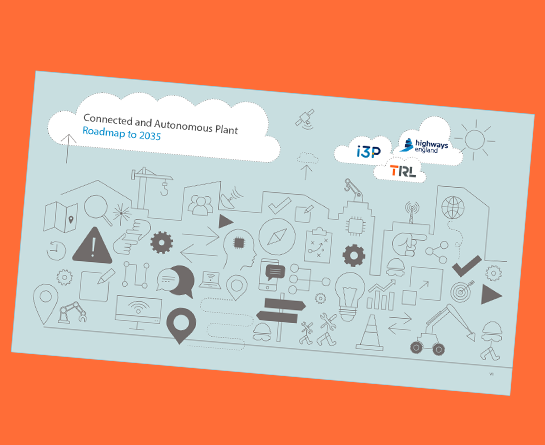Connected and Autonomous Plant - an opportunity and a challenge
Advances in technology and the introduction of Connected and Autonomous Plant
(CAP) are transforming activities across the UK construction sector. CAP offers potential in a wide range of applications, for example: remote collection of data for design; geofencing of plant operation; semi-autonomous extraction and movement of materials; offsite and robotic construction.
However, this transformation presents a challenge to the sector. The introduction of CAP technology lacks a unified approach. Practice differs across construction sites and between clients. As a result, CAP deployment varies significantly across sites and information flow between organisations is slow.
The industry is developing a strong understanding of the potential presented by CAP, with exciting examples of new technology being applied in practice. However, the community is concerned over the pace and practicality of implementing new methods, in context of the current approach to commissioning and delivering construction projects. Because there is no clear direction to encourage the use of CAP, the industry must bear all the risks of investing in new systems. These investments are made in an environment where there’s a lack of certainty about the capability of the technology, and a lack of clarity about the risks, liabilities and acceptability of its use.
Why set a vision and develop a Roadmap?
Just as the use of machines and robotics transformed the factory floor, CAP could deliver safe, automated, efficient construction processes, drawing on skilled labour in lower numbers to turn out higher outputs. If the benefits to manufacturing are mirrored in construction, productivity improvements achieved via CAP could exceed £200Bn by 2040.But without the coordination, strategy and direction proposed in the Roadmap, achieving widespread automation in construction is unlikely. A delay of only five years could reduce the 2040 savings by over 50%. On the other hand, by accelerating the adoption of technology that already exists, we could see significant benefits within five years.
What does the Roadmap describe?
The Roadmap has been developed collaboratively with over 75 organisations. Questionnaires and workshops identified the actions required to overcome technical, business and legislative challenges affecting successful delivery of the vision. The Roadmap brings these together in nine workstreams, each focussing on key areas identified by stakeholders. These workstreams would be delivered in parallel through industry-wide collaboration.
Access the interactive version of the CAP Roadmap here.
A presentation and discussion about the CAP Roadmap is available here.

